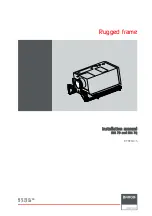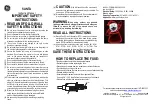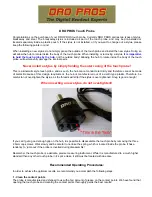
7
STROPPING/POLISHING THE EDGE IN STAGE 3
Pull the blade through the left slot of Stage 3 (see Figure 7) and then through the right slot
of Stage 3. Make 3 pairs of pulls, alternating each pull in the left and right slots. You should
take about 3 to 4 seconds for each pull for a 5 inch (12 cm) long blade.
Then make 2 pairs of alternating faster pulls in this Stage, about 1 second per pull for a
5 inch (12 cm) blade to put a final polish on the edge.
Check the blade for sharpness. For a sharper edge make a few more pairs of fast pulls and
check for sharpness.
RE-SHARPENING EURO/AMERICAN AND CONTEMPORARY ASIAN BLADES
Re-sharpen following the Stropping/Polishing procedure in Stage 3 as described above.
Depending on its use, you should be able to re-sharpen to a razor sharp edge 3 or more times
using only Stage 3 before finding it necessary to again hone in Stage 2. Hone in Stage 2 only
when you find it is taking too long or too many pulls in Stage 3 to bring the edge to razor
sharpness. In that event, follow the honing and stropping/polishing sequence in Stages 2 and
3 as described above.
SHARPENING THE TRADITIONAL (SINGLE BEVEL)
JAPANESE BLADE
Traditional Japanese knives such as the sashimi blade shown here are single sided and
have a large factory bevel (see Bevel A, Figure 10c) on the front side of the blade. There
are a large number of manufacturers of knives of this type used widely to prepare sashimi.
The factory bevel (Bevel A) is commonly ground at about 10 degrees, but there are
exceptions and that angle is not standardized at the factories. Designs of the
Figure 6. Honing in Stage 2 (left slot).
Figure 7. Stropping/Polishing in Stage 3.


































